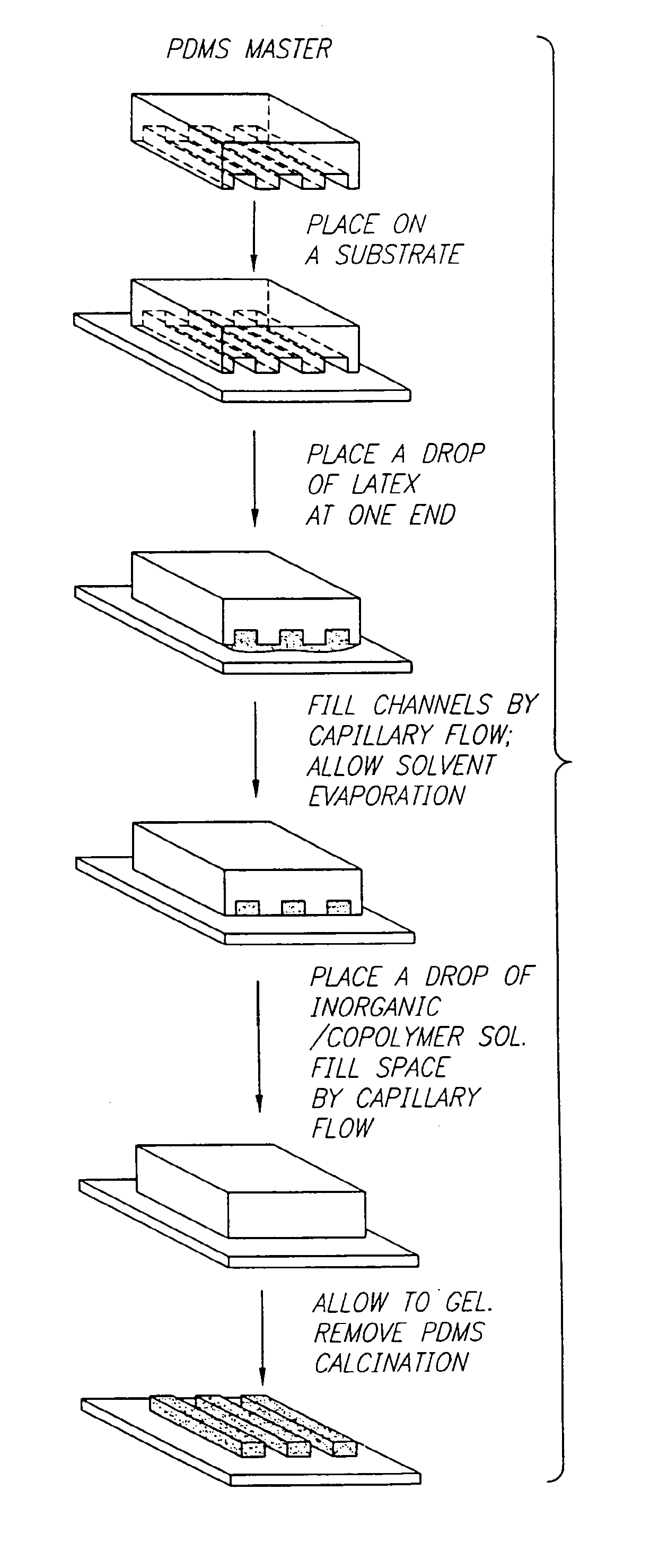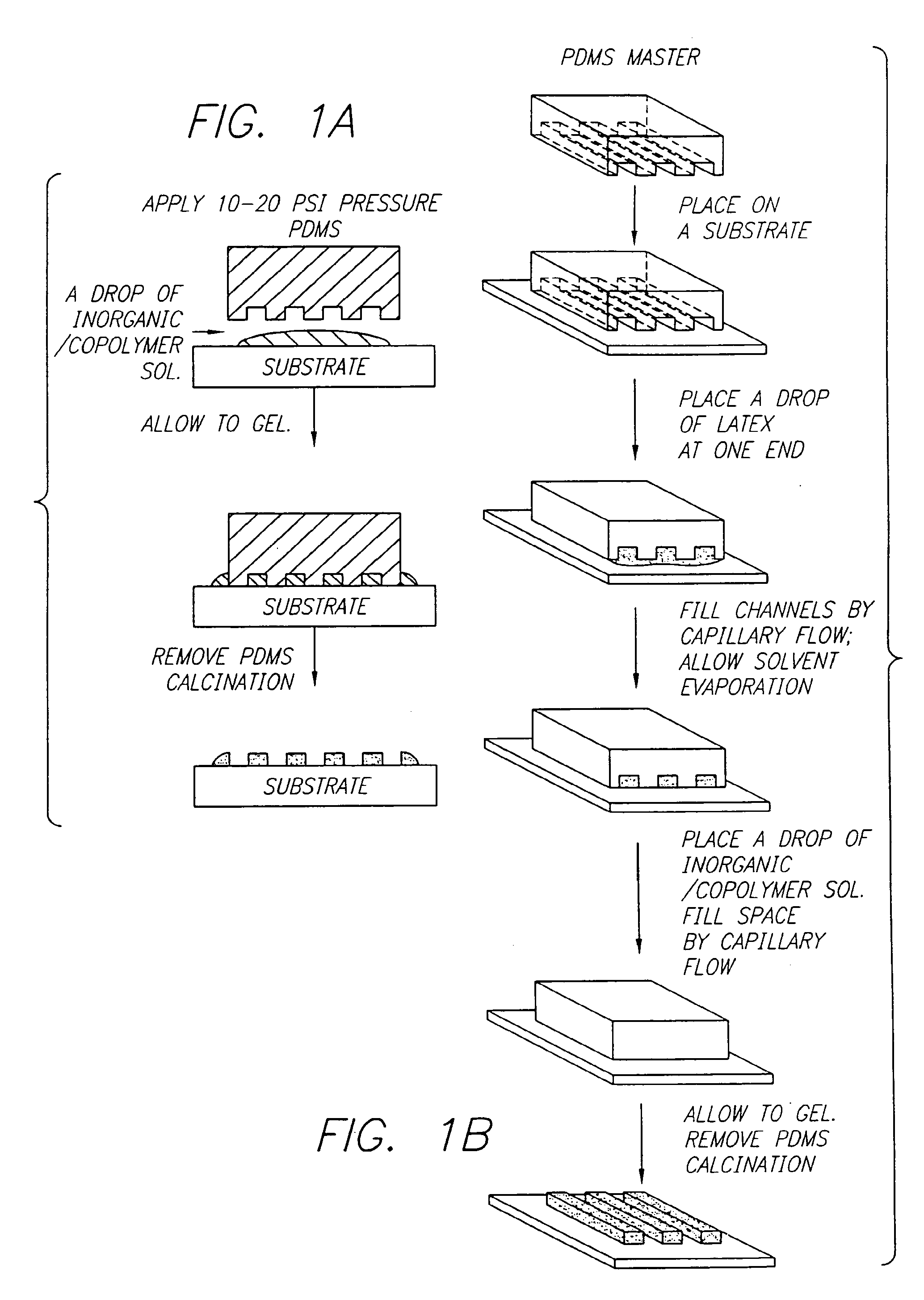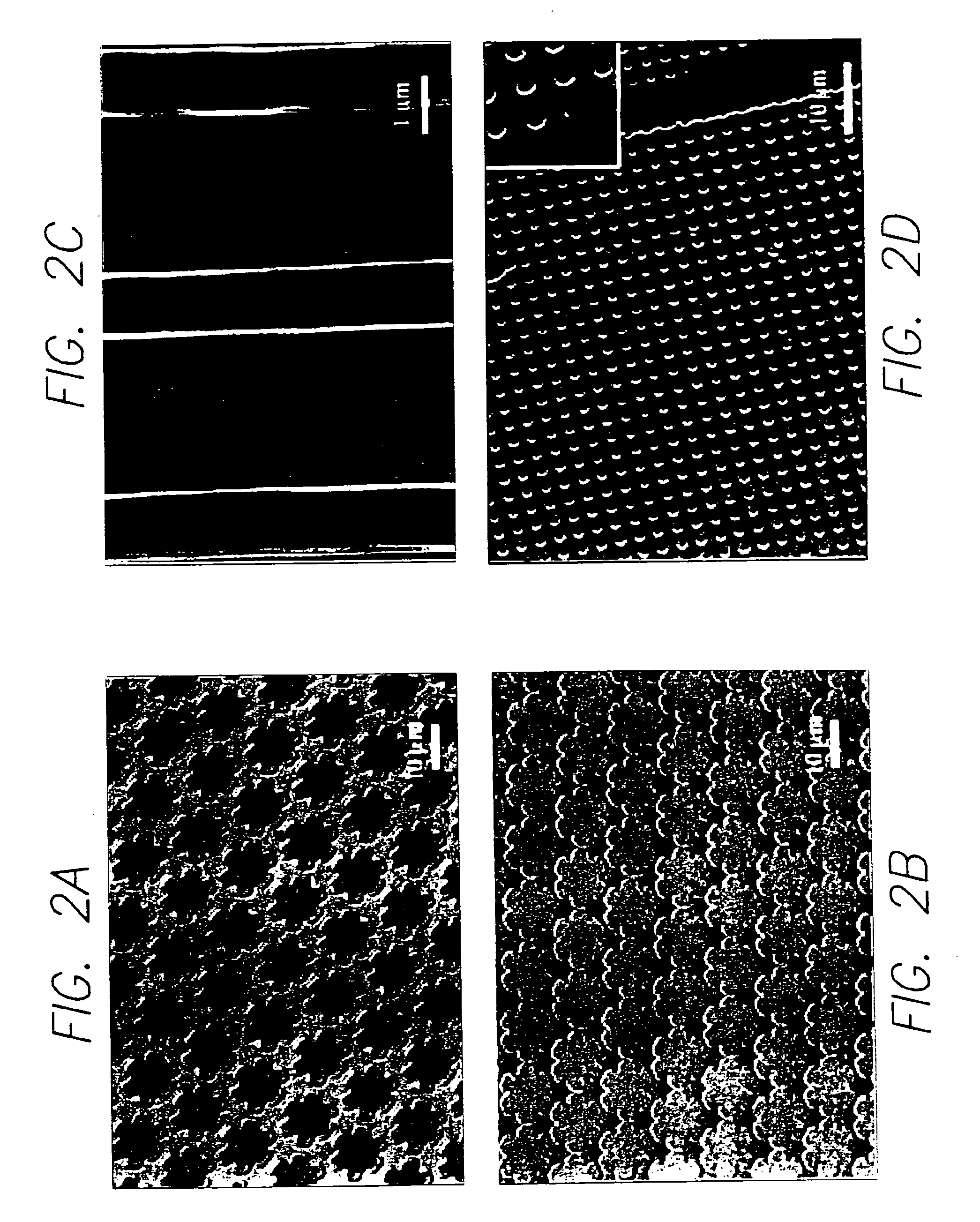Method of forming mesoscopically structured material
a mesoporous material and structure technology, applied in the field of mesoporous material structure formation, can solve the problems of large-pore mesoporous materials with vastly different compositions, nanocrystalline frameworks, and fabrication of hierarchically ordered structures at multiple length scales
- Summary
- Abstract
- Description
- Claims
- Application Information
AI Technical Summary
Benefits of technology
Problems solved by technology
Method used
Image
Examples
example 1
RESULTS OF EXAMPLE 1
[0053]Mesoscopic ordering in these materials is characterized by their low-angle X-ray diffraction patterns and transmission electron microscope (TEM) images. FIGS. 2a and 2c show several representative scanning electron microscope (SEM) images of the dual-scale synthesized ordered materials. The structural ordering observed at the micrometer level was imparted by the micromolding operation using the PDMS mold, while the mesoscopic ordering results from the self-assembly of the sol-gel block copolymer solution. Both isolated (FIG. 2a) and continuous (FIG. 2b) features can be produced by this overall process. The materials shown in FIGS. 2a and 2c are hexagonal mesoporous silica (cell parameter a=approximately 10.5 nm). The smallest line feature obtained with the micromolding was about 100 nm (FIG. 2c).
EXAMPLE 2
[0054]The procedure of Example 1 was followed, substituting Pluronic F-127 (EO106PO70EO106) for Pluronic P-123 (EO20PO70EO20) as the structure-directing tr...
example 2
RESULTS OF EXAMPLE 2
[0055]The results of using Pluronic F-127 (EO106PO70EO106) as the triblock copolymer was the material synthesized was cubic mesoporous silica (cell parameter a=approximately 11 nm), as seen in FIG. 2b.
EXAMPLE 3
[0056]The procedure of Example 1 was followed by substituting NbCl5 as the inorganic metal precursor compound. 1 g of Pluronic P-123 (EO20PO70EO20) was dissolved in 10 g of ethanol. To this solution, 0.01 mole of NbCl5 was added with vigorous stirring.
example 3
RESULTS OF EXAMPLE 3
[0057]FIG. 2d shows a representative SEM image of a dual-scale synthesized ordered Nb2O5 material, which is a potential ultra-sensitive humidity sensor.
EXAMPLE 4
[0058]The procedure of Example 1 was followed by substituting TiCl4 as the inorganic metal precursor compound. 1 g of Pluronic P-123 (EO20PO70EO20) was dissolved in 10 g of ethanol. To this solution, 0.01 mole of TiCl4 was added with vigorous stirring.
PUM
| Property | Measurement | Unit |
|---|---|---|
| Length | aaaaa | aaaaa |
| Length | aaaaa | aaaaa |
| Length | aaaaa | aaaaa |
Abstract
Description
Claims
Application Information
 Login to View More
Login to View More - R&D
- Intellectual Property
- Life Sciences
- Materials
- Tech Scout
- Unparalleled Data Quality
- Higher Quality Content
- 60% Fewer Hallucinations
Browse by: Latest US Patents, China's latest patents, Technical Efficacy Thesaurus, Application Domain, Technology Topic, Popular Technical Reports.
© 2025 PatSnap. All rights reserved.Legal|Privacy policy|Modern Slavery Act Transparency Statement|Sitemap|About US| Contact US: help@patsnap.com



